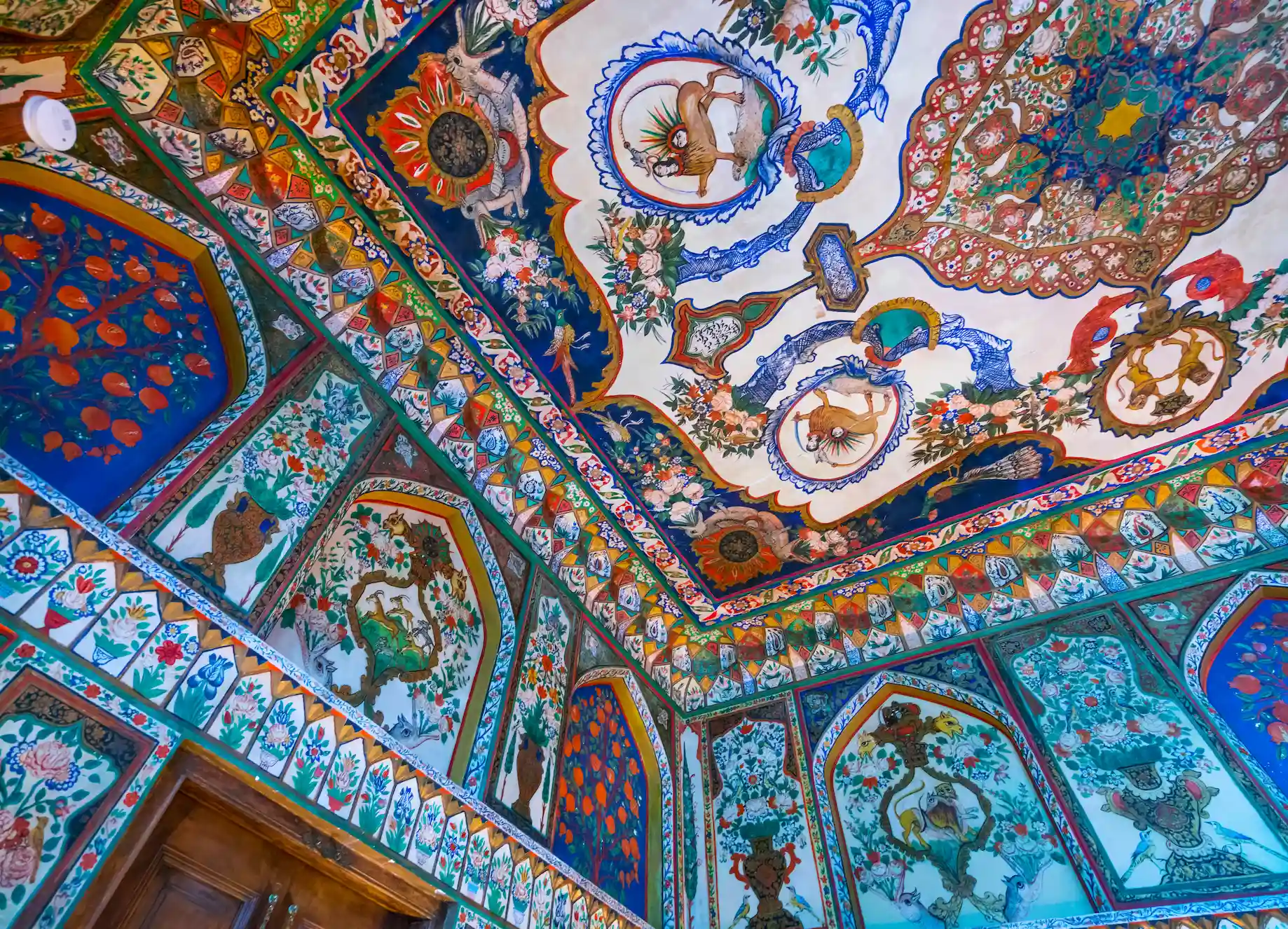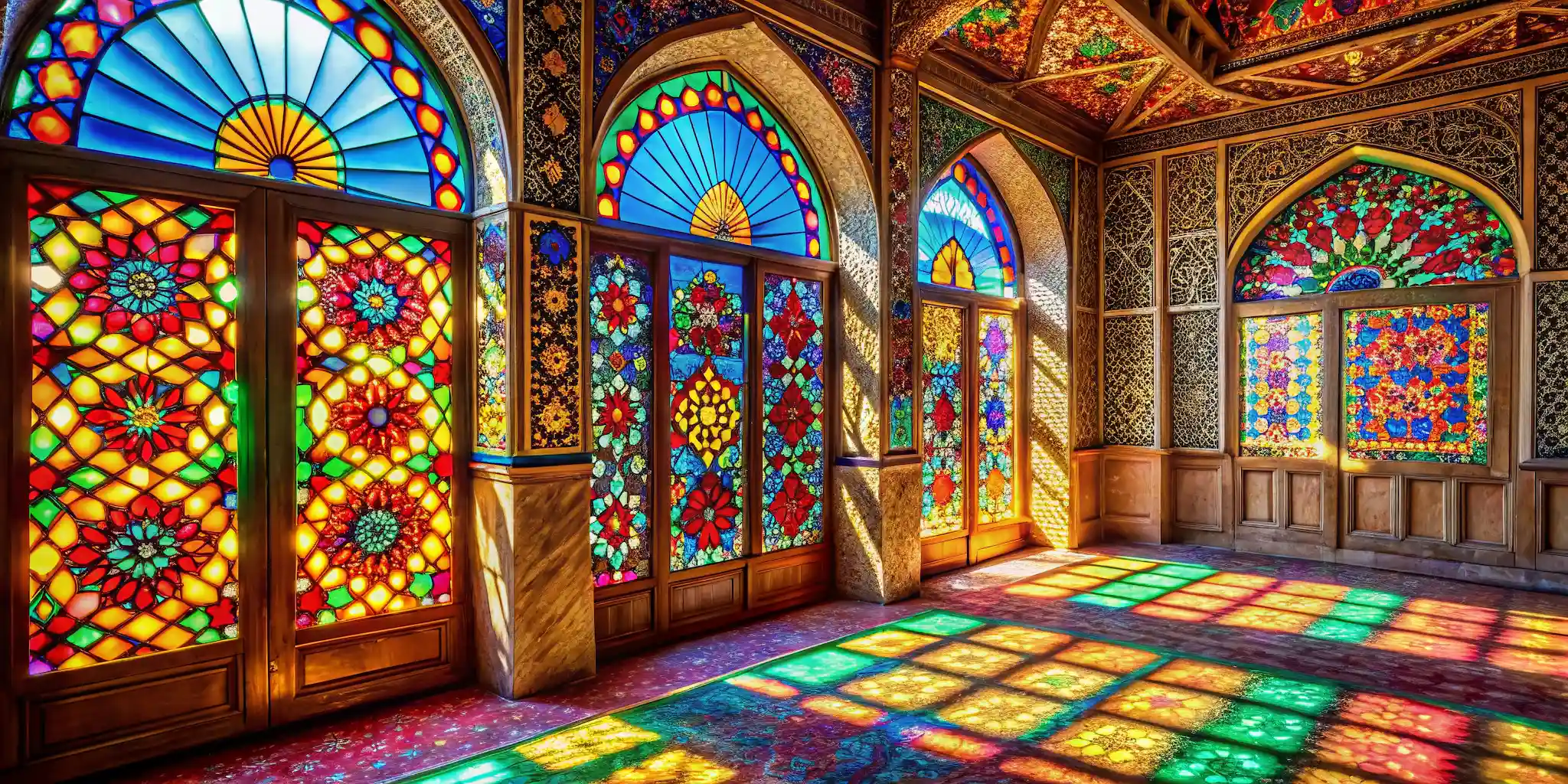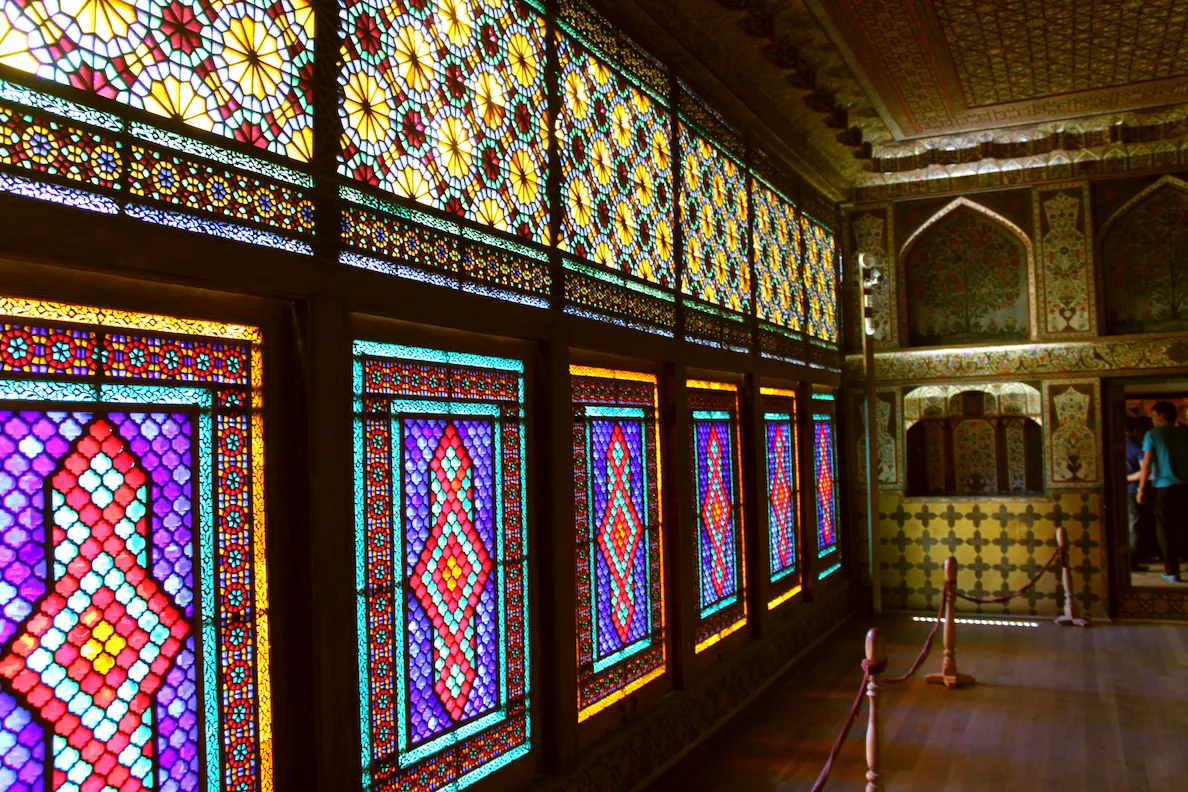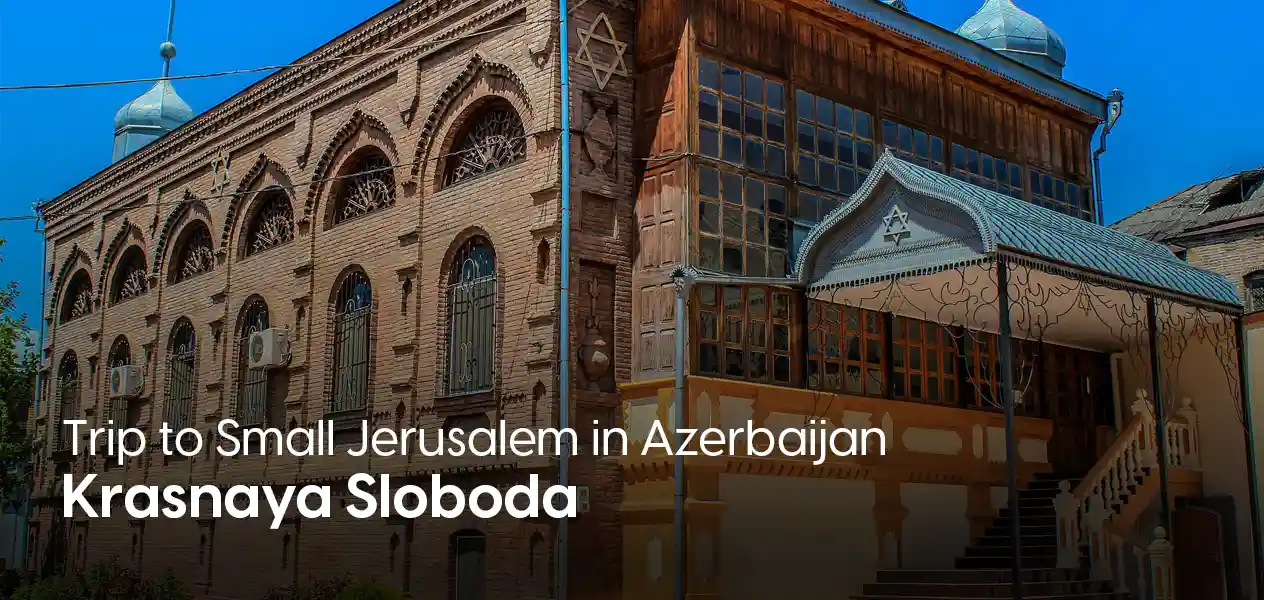

- 1092 read by
- 30.06.2025 15:32
Palace of Shaki Khans: History, Architecture, and Rumors
In this post, I'll give you significant info about the Palace of Shaki Khans.
To start, I'll briefly touch on the history of this structure.
If you're deeply interested in this historic building, this quicky will also satisfy your curiosity in terms of palace's:
Architecture;
Rumors & Myths;
And much more.
At the end of this article, you'll also find the Sheki Khan Palace entrance fee and opening hours.
It may help you during a tour of this masterpiece in Azerbaijan.
So let's dive right in.
Brief History of the Palace of Shaki Khans
As some of you might know, khanates began to emerge in Azerbaijan at the end of the 18th century.
The main reason for this was the fall of the Safavids, a 236-year-old dynasty.
Resultantly, more than 20 khanates were formed throughout North and South Azerbaijan.
Among the various khanates of 18th-century Azerbaijan, the strongest was the Sheki Khanate.
And it’s now that the story about the Sheki Khan's Palace (Şəki xan sarayı in Azer) begins.
According to Encyclopedia Britannica, it is not obvious when it was built; building is supposed to have started somewhere around 1790.
However, some sources suggest the construction began in the 1770s or even as early as 1765.
What we do know is that the palace’s built by architect Hadali Zeynalabdin Shirazi for the grandson of Haji Chalabi (the founder of the independent Sheki Khanate), Mohammad Hussein Khan Mushtakin.
Shortly, after surviving the Russian occupation and undergoing many restorations over the years, the Palace of Shaki Khans now stands tall, awaiting its visitors.
Sheki Khan's Palace’s Splendid Architecture
Architecture of Sheki Khan Palace indeed represents one unique historical building while being a UNESCO World Heritage Site.
This palace is a real standout - it's magnificent and has a totally different vibe from the others.
It’ll suffice to demonstrate that each square meter of the grid is made up of thousands of interconnected pieces.
But the most unique feature is the use of detailed geometric patterns made with colored glass pieces, without the use of nails or other binding materials.
This technique is a long-time classic in Azerbaijani architecture.
It's called "şəbəkə-pəncərə", which translates to "stained-glass windows".
And they're somewhat reminiscent of the patterns found on Azerbaijan carpets.
Those windows are made by carefully fitting colored glass pieces into wooden frames to form intricate, symmetrical patterns.
More generally, the two-story Sheki Khan Palace (Şəki Xan Sarayı) is about 100 feet (30 meters) long.
Main facade of the building is a network (grid) of windows and doors divided into the smallest geometric shapes.

On the flipside, the palace inside contains a lot of various folk arts, especially some very interesting 18th and 19th-century wall paintings.

Those paintings adorn the center halls of both the palace floors, the walls, all the niches, the stairs from the walls up to the ceilings, the ceilings of side rooms on the second floor, and so on.
Unlike anything else in the world, the wooden pieces are covered with differently colored glass between them.
Every square meter of the network consists of an average of 5,000 and in complex places 14,000 wooden and stained-glass windows.

Inside the palace, there are several beautiful rooms, 4 corridors, and 2 balconies with mirrored glass.
As you might expect, each room in the Palace of Shaki Khans has its own style and decorations.
These rooms are also set up differently depending on their intended purpose.
Rooms on the First Floor of the Khan's Palace
The ground floor of Sheki Khan's Palace was used as the main area for official and reception purposes.
And it contains a total of 2 rooms and a hallway.
One of the rooms on this floor is the administrative room.
This’s the official meeting room in which the Khan and his officials conducted governmental affairs or received visitors.
Adorned with flower frescoes, hunting scenes, and fighting scenes, this room symbolizes the Khan's power and leadership.

The 2nd room downstairs is a storage space that could be used for storing treasures or archives.
While the administrative room is ornamented, this room is much simpler, though some elegance in patterns still decorates the walls.
Finally, on the first floor you'll find the central corridor, also called the hallway.
It connects rooms on the ground floor, and has decorative floral and geometric designs, too.
At the same time, this makes the staircase leading to the second floor accessible, where all the important rooms are.
2nd Floor: Main Residential Area of the Shaki Khan Palace
Indeed, the second floor of the Palace of Shaki Khans is regarded as the most luxurious part of the complex.
One of the rooms on the east side of the complex upstairs is the summer room.
Adorned with elaborate murals depicting nature, flowers, and birds, which symbolize peace and prosperity, this room was primarily used for 2 purposes:
Hosting guests;
And diplomatic meetings.
On the west side of the palace, on the other hand, is the winter room where the Khan's family stayed during the cold months.
Keeping the warmth in is the main idea of the winter room, so it's got thicker walls and heavy wooden doors.
But the most important room on this floor is the Hall of Mirrors or Main Throne Room or Great Audience Hall.
Here gold-painted frescoes, mirrored surfaces, and floral motifs create a truly breathtaking effect.
The huge şəbəkə window fills the room with varicolored light and turns it into one of the most spectacularly vividly filled rooms in the palace.
You'll also find the Khan's private room, the women's quarters (harem), and an open terrace balcony with a view of Sheki on this floor.
With time, the rooms and splendor of this palace generated a lot of rumors and legends concerning it.
Bizarre Rumors About the Palace of Sheki Khans
Like many ancient sites, there have been various myths and rumors associated with the Palace of Sheki Khans.
Whether the given rumors about these are true or not is undecidable, but I want to share a few interesting ones here.
#1. Hidden Treasure of the Sheki Khans
One legend says that, back in the 19th century before the Russians showed up, the Sheki Khans stashed away some gold and precious stones in the palace walls or its underground tunnels.
But despite searching for it for a long time, no one has found any treasure.
#2. The Palace with No Nails
This is the most popular one among the locals too.
Surprisingly, there are no single nails used in constructing the entire palace - which is said a bit exaggeratedly.
Indeed, it is true that the intricate stained glass windows were installed without the use of nails.
However, the claim that the entire building was constructed in this manner is a big lie.
#3. Khan Had the Architect Hanged
Some rumors say that the architect who designed Sheki Xan Sarayi was executed so he could never replicate the beauty elsewhere.
Another version of the story says that the cruel Khan had the architect's hands cut off.
Because the architect had said to him that he could do better than that.
#4. The "Blood-Stained" Wall
Finally, the "Blood-Stained" Wall: 4th on the list of the rumors about the Palace of Shaki Khans.
According to this saying, one of the walls of the palace was once stained with the blood of a murdered khan or noble.
Some versions relate that it was a treachery within the khan's court, others speak of an execution.
Anyway, that was probably just some kind of drama folktale rather than a historical event.
Just like others on the list.
Sheki Khan Palace: Entrance Fee, Timings and Location
As of today the entrance fee for Sheki Khan Palace is 9 AZN for foreigners, which is around $5.30 USD.
Students pay 1 AZN, and local citizens can enter the palace by purchasing tickets for 2 AZN.
It is open from 9:00 a.m. (9.00) to 6:00 p.m. (18.00), Monday through Friday, and on weekends as well.
In closing, I hope this article will help you get a general view about the Sheki Khan’s Palace in a nutshell.
Have a great tour!
Need help planning your Sheki adventure? For online reservations, reach out to us at this number » +994 992 72 22 27.







Leave a Comment